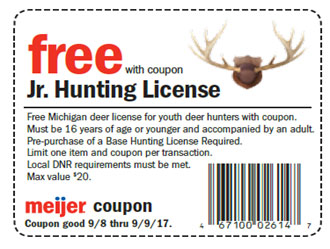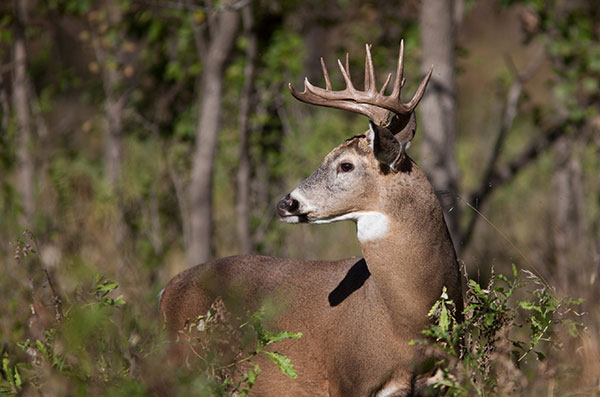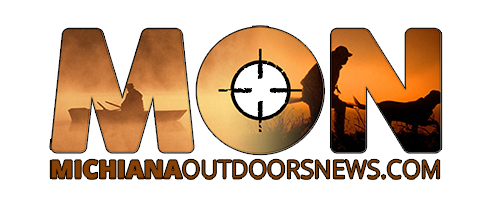- Details
MDNR Report
A 3 -year-old female deer taken during Michigan's youth deer hunting season is likely to be the 10th free-ranging deer in the state found to have chronic wasting disease.
The animal was harvested in Montcalm Township in Montcalm County, and preliminary tests indicate the animal may be positive for CWD. The DNR is awaiting final confirmation from the Michigan State University Veterinary Diagnostic Laboratory.
Montcalm is located north of Grand Rapids. Since May 2015, the DNR has actively conducted surveillance for CWD. To date, more than 14,000 deer have been tested since the first positive case was found, with nine cases of CWD confirmed already in free-ranging white-tailed deer previously identified in Ingham and Clinton counties.
The suspect deer from Montcalm County was harvested by a youth hunter during the September youth season. The hunter voluntarily took the animal to a DNR deer check station and submitted the animal for testing.
"We cannot thank this family enough for bringing their deer to a check station, said Dr. Kelly Straka," DNR state wildlife veterinarian. "Without their effort, the disease may have gone undetected in this area. We encourage hunters from any part of the state, especially the south-central Lower Peninsula, to have their deer tested."
CWD is a fatal neurological disease that affects white-tailed deer, mule deer, elk and moose. It is caused by the transmission of infectious, self-multiplying proteins (prions) contained in saliva and other body fluids of infected animals. Susceptible animals can acquire CWD by direct exposure to these fluids, from environments contaminated with these fluids or the carcass of a diseased animal.
Some CWD-infected animals will display abnormal behaviors, progressive weight loss and physical debilitation; however, deer can be infected for many years without showing internal or external symptoms. There is no cure; once a deer is infected with CWD, it will die.
"Infected deer don't necessarily look sick," Straka said. "Having your deer tested is the only way to know if it has chronic wasting disease."
- Details
MDNR Report
 Free Junior Deer Hunting Licenses Available at Meijer Friday/SaturdayYoung hunters once again will have the opportunity to get a free deer hunting license at all Meijer stores in Michigan Friday and Saturday, Sept. 8-9.
Free Junior Deer Hunting Licenses Available at Meijer Friday/SaturdayYoung hunters once again will have the opportunity to get a free deer hunting license at all Meijer stores in Michigan Friday and Saturday, Sept. 8-9.
Youths must be accompanied by an adult, and can receive the free junior deer hunting license coupon in stores.
The coupon is valid for one junior deer hunting license, a $20 value, or mentored youth hunting license. Those who hunt in Michigan also must purchase a base license, which costs $6 for youth ages 10-16. The base license allows hunters to hunt small game and purchase additional hunting licenses. The mentored youth hunting license, valid only for hunters under the age of 10, includes a base license and does not require separate purchase of the base license.
Meijer has offered youth hunters free deer hunting licenses since 2008.
- Details
(MDNR report)
For those who plan to hunt outside of Michigan this fall, it is important to note that regulations related to the importation of harvested cervids (such as deer, elk or moose) have changed substantially.
Hunters who harvest a cervid in any other state or province can bring back only the following cervid parts into Michigan:
- Details
(MDNR Report)
The Michigan DNR reminds hunters that antlerless deer application results are available beginning today.
Application results and leftover license availability can be found at mi.gov/deer.
Any leftover antlerless deer licenses not issued in this drawing will be sold on a first-come, first-served basis beginning Tuesday, Sept. 5, at 10 a.m. EDT until license quotas are met.
The 2017 antlerless deer license quotas for each DMU also can be found at mi.gov/deer. Please note, DMU 333 has unlimited antlerless licenses that may be purchased without application beginning Sept. 5 at 10 a.m.
- Details
(Excerpted from "Calling Whitetails: Methods, Myths and Magic," by Gary
Sefton)
 The Mechanics of Deer Calling
The Mechanics of Deer Calling
The trick to calling anything is in knowing what to say, when to say it and what it should sound like. You will need more than precise written descriptions of the actual and the artificial sounds.
Go to Google, type in 'deer vocalizations' and listen to the live deer recordings. Once you know what a vocalization should sound like, you will need an accurate device to reproduce the sounds. Different ears will hear the same sounds differently. My best advice is to listen to different grunt and bleat calls and go with the ones that sound best to your ear when compared to what you've heard on 'live' shows and tapes.
Social Curiosity Situations / Early Season Calling
Late September and early October are my favorite times to bowhunt whitetails. I look forward to my pre-season scouting trips in search of preferred food sources, and I enjoy the satisfaction and the beginning tingles of excitement I get when I find what I am looking for.
I use binoculars to scout for acorns (because they can be invisible to the naked eye), marking the heavy nut-bearing trees on a map before the season.




